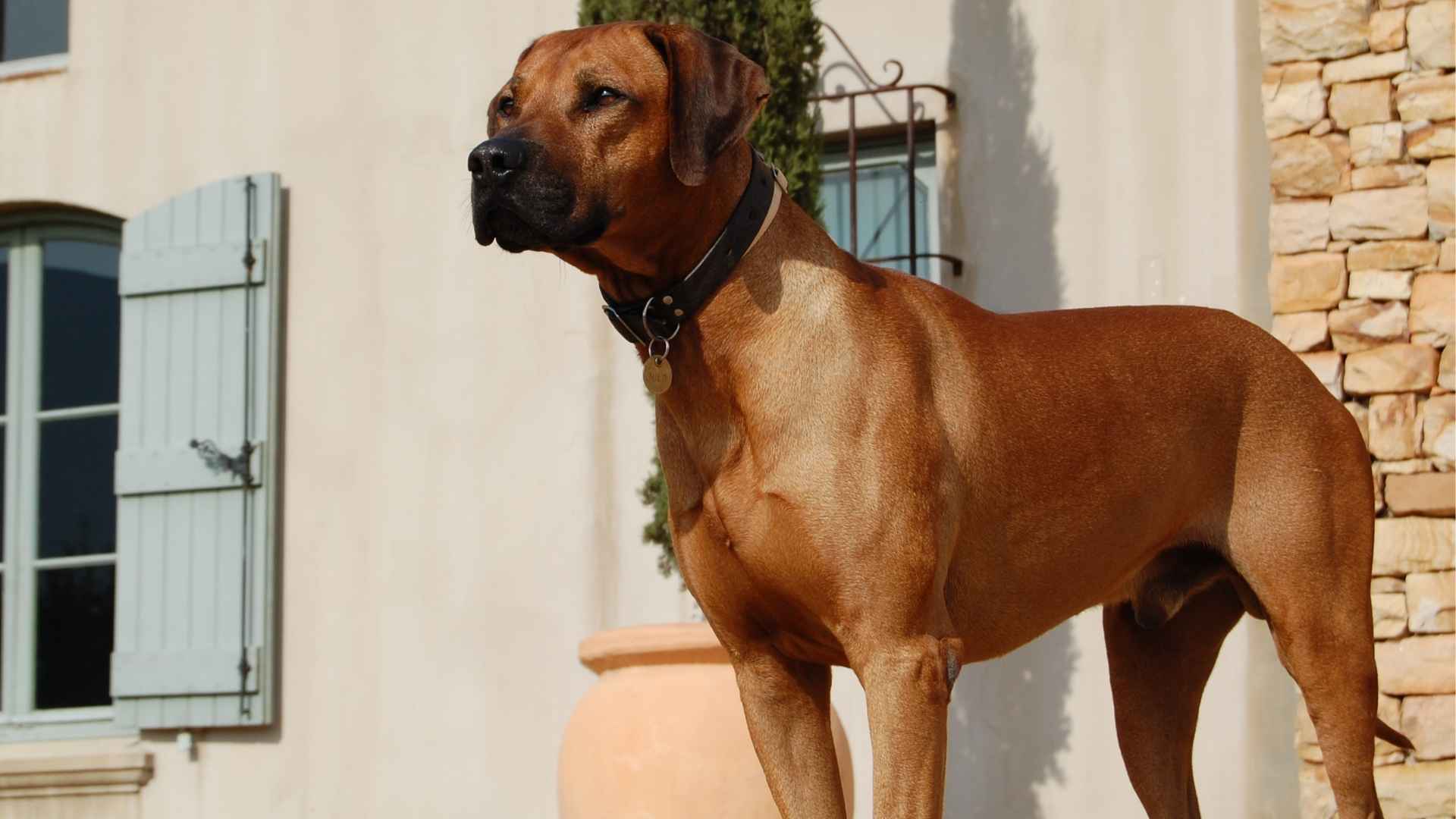When it comes to choosing a dog for security, it’s important to understand that some dogs are naturally equipped with the instincts and traits needed to protect you, your family, and your property. The best guard dog breeds for protection and security are known for their loyalty, alertness, intelligence, and ability to respond well to training. Typically, these dogs are large, courageous, and highly observant, making them excellent guardians.
However, a great security dog is not just about aggression—it’s about balance. The ideal protector should be vigilant and fearless, but also well-mannered and obedient. Proper training plays a vital role in shaping your dog into a reliable security companion who can recognize genuine threats without becoming overly aggressive.
Whether you need a guard dog for personal safety or to secure your home, choosing the right security dog breed ensures both protection and a strong bond with your canine companion.
Security Dog Breeds
1. German Shepherd
The German Shepherd is a beloved working dog breed that originally comes from Germany. They are fantastic security dogs because they bond deeply with their owners and are incredibly trainable. They have a natural instinct to protect, but they’re also friendly and respectful towards family and visitors. This balance means they can be fierce guardians when needed, but loving companions the rest of the time.
There are five main lines of German shepherds:
West German Working Line
East German DDR Working Line
Czech Working Line
American Show Line
European Show Line
For security work, the East German DDR Working Line and the Czech Working Line are the most suitable. East German DDR Working Line shepherds are larger in size and often used as police, military, and security dogs, as well as in search-and-rescue missions.
What Makes German Shepherds Good for Security?
Britannica states German shepherds are an outstanding choice for security work, thanks to several key qualities that make them highly effective protection dogs:
Speed: German Shepherds can sprint up to 30mph—nearly four times faster than the average human, allowing them to quickly intercept threats or chase down intruders.
Intelligence: Their high intelligence and quick learning ability make German Shepherds ideal for advanced security training, including patrol duties and detection work.
Senses: With powerful hearing and a keen sense of smell, they can detect threats early and identify hidden items, making them excellent for surveillance and detection roles.
2. Doberman Pinscher
The Doberman Pinscher is a loyal, alert, and highly capable family guardian. Known for being quiet yet vigilant, they bark only to alert owners and are quick to respond to potential threats. Dobermans are naturally affectionate with loved ones and tend to be reserved around strangers.
Developed in the late 1800s in Germany by Karl Friedrich Louis Dobermann, this breed is sleek, muscular, and agile. Their short coat—seen in black, blue, red, or fawn with rust markings—complements their elegant build.
They’re smart, intuitive, and often form deep bonds with every family member, sometimes showing a preference for one person. Though naturally protective, socialization from an early age helps prevent over-guarding tendencies.
Key Reasons Dobermans Excel in Security and Protection:
Size & Strength: Males up to 70 lbs and 28 inches tall; muscular and built for speed and endurance.
Protective Instinct: Naturally bonded to family, instinctively protective and affectionate with loved ones.
Loyalty: Extremely devoted and people-oriented, often forming strong bonds with their owners.
Intelligence: Among the smartest breeds, excelling in obedience and suited for police and military roles.
Trainability: Responds well to training but needs early socialization and a confident handler.
Perceptiveness: Skilled at reading human body language and emotional cues.
Courage: Brave and willing to face danger to protect their family, often serving in guard roles.
3. Belgian Malinois
The Belgian Malinois, developed in the 1800s in Mechelen, Belgium, is an extremely intelligent and driven working breed. Known for its square, muscular frame and dense coat—ranging from fawn to mahogany with black-tipped hairs, the Malinois often sports a distinct black mask and ears.
In the U.S., it’s commonly referred to as the “Mal” and is widely used by police and military forces for its strength, agility, and unwavering loyalty.
This breed is not suited for a sedentary lifestyle. Belgian Malinois thrive on activity and purpose. Without daily physical and mental stimulation, they can become restless or destructive, especially in their younger years. However, with proper outlets for their energy, they adapt well to family life and become calm, respectful companions.
Why the Belgian Malinois Stands Out:
Work Ethic: Bred for demanding jobs; excels in agility, herding, obedience, and protection.
Physical Prowess: Strong, agile, and capable of high-intensity tasks like scaling obstacles or tracking in tough terrain.
Mental Drive: Razor-sharp alertness and eagerness to learn make them responsive and reliable under pressure.
Loyal Nature: Fiercely devoted and naturally protective, especially when given structure and consistent training.
The true strength of the Malinois lies in its blend of physical capability and focused mindset. With the right guidance, these dogs become not just exceptional working partners but also deeply loyal family members.
4. Rottweiler
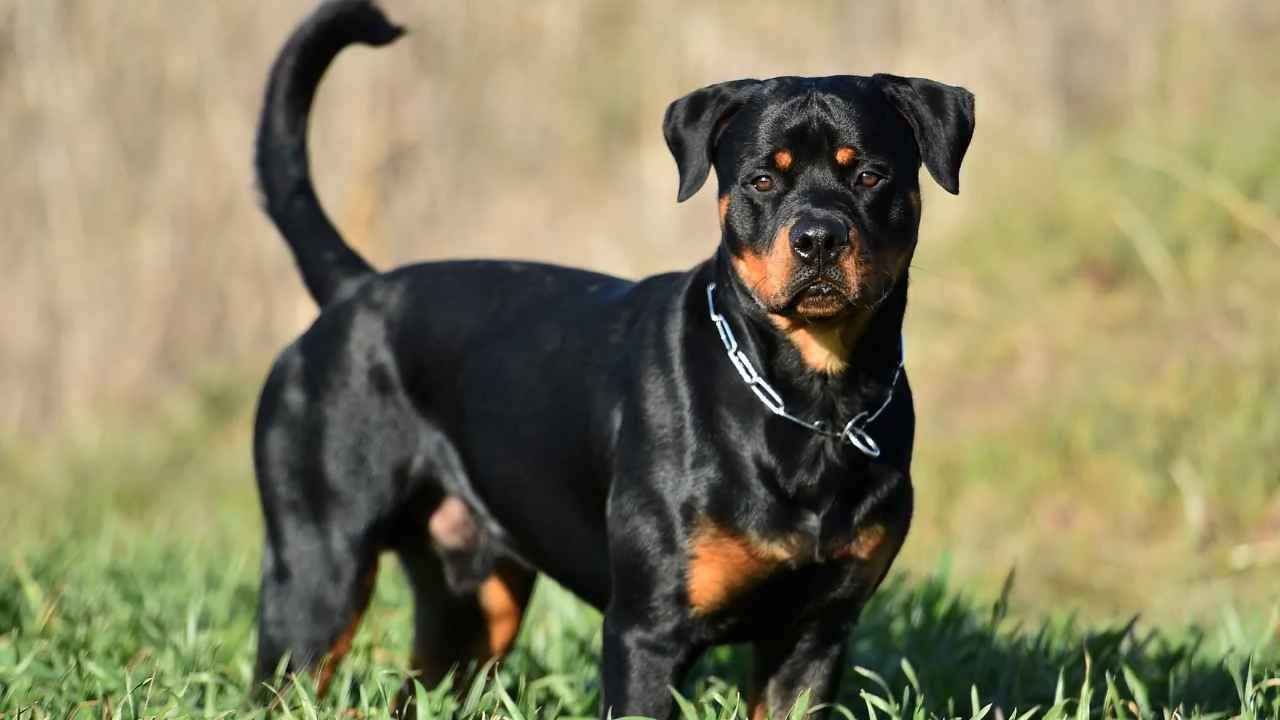
The Rottweiler is a powerful working dog with a history as impressive as its stature. This breed is believed to descend from drover dogs left behind by Roman legions around present-day Rottweil, Germany.
WebMD states that for centuries, Rottweilers helped herd livestock to market and served as loyal companions to local butchers, often carrying money in a pouch tied around their necks. This earned them the nickname “the Butcher’s Dog,” a nod to their reliability and protective instincts.
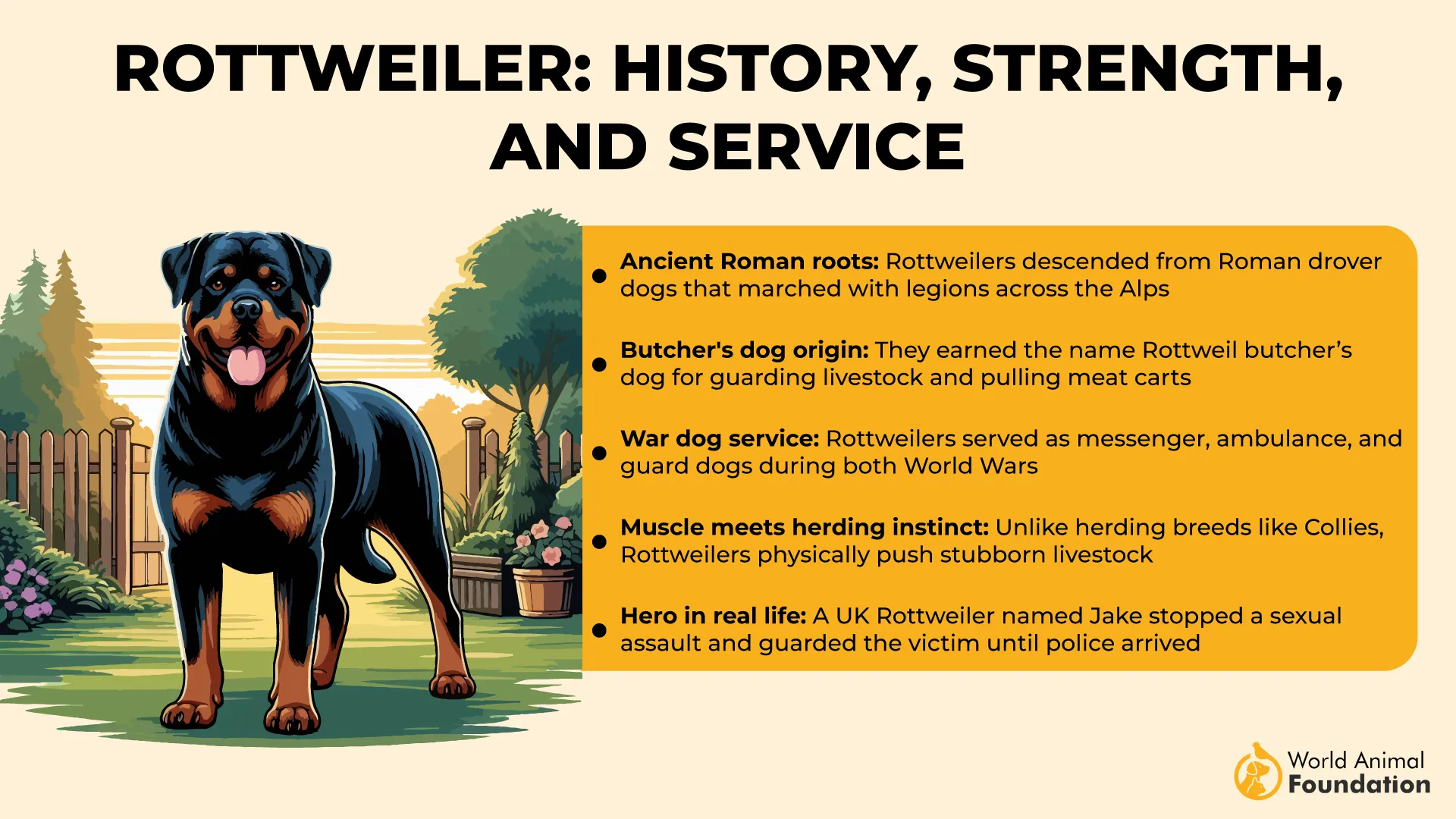
Beyond guarding, Rottweilers are highly versatile. Their eagerness to please and hardworking nature make them great candidates for service roles, guide work, therapy, basic obedience training competitions, and even pulling carts. Most importantly, with the right care and companionship, they are deeply affectionate and devoted pets who bond closely with their families.
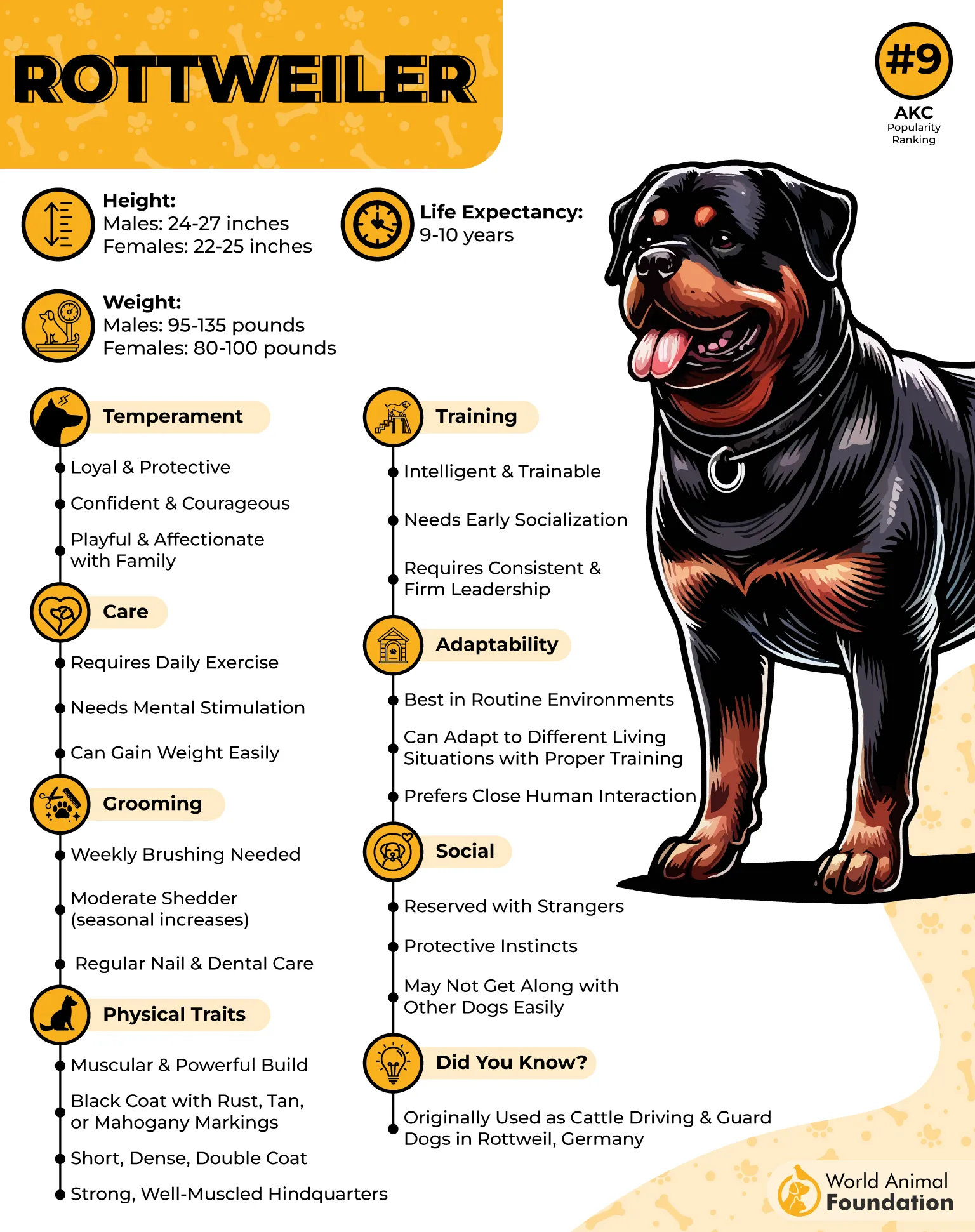
Here is why Rottweilers make excellent guard dogs:
Powerful Presence: Standing 22–27 inches tall and weighing up to 135 pounds, Rottweilers have a commanding appearance that naturally deters intruders. Their muscular build, black coat, and strong bite force (328 PSI) add to their intimidating presence.
Natural Protectors: Bred to guard livestock, Rottweilers are confident, fearless, and instinctively protective of their territory and family. They are alert, and naturally suspicious which makes them great guard dog.
Intelligent and Trainable: Rottweilers are highly intelligent and respond well to guard dog training with positive reinforcement. They thrive in structured environments with clear boundaries.
Loyal Companions: Beneath their tough exterior, Rottweilers are affectionate, deeply loyal, and family-oriented. They bond strongly with their people and often enjoy staying close to them.
Low-Maintenance but Active: Their short coat requires minimal grooming, but they do need regular physical activity. With their adventurous spirit, they make excellent companions for active households.
5. Cane Corso

The Cane Corso is a majestic and powerful breed with origins dating back to ancient Rome. A descendant of Molossian war dogs, it was developed in Italy to serve as a guardian, hunter, and farmhand. Its Latin name translates to “bodyguard dog,” a fitting nod to its natural protectiveness; states PDSA.
Historically, Cane Corsos guarded property, herded livestock, and hunted large game-like wild boar. Although the breed nearly vanished during World War II, a revival began in the 1970s, and today they are once again valued for both companionship and personal protection.
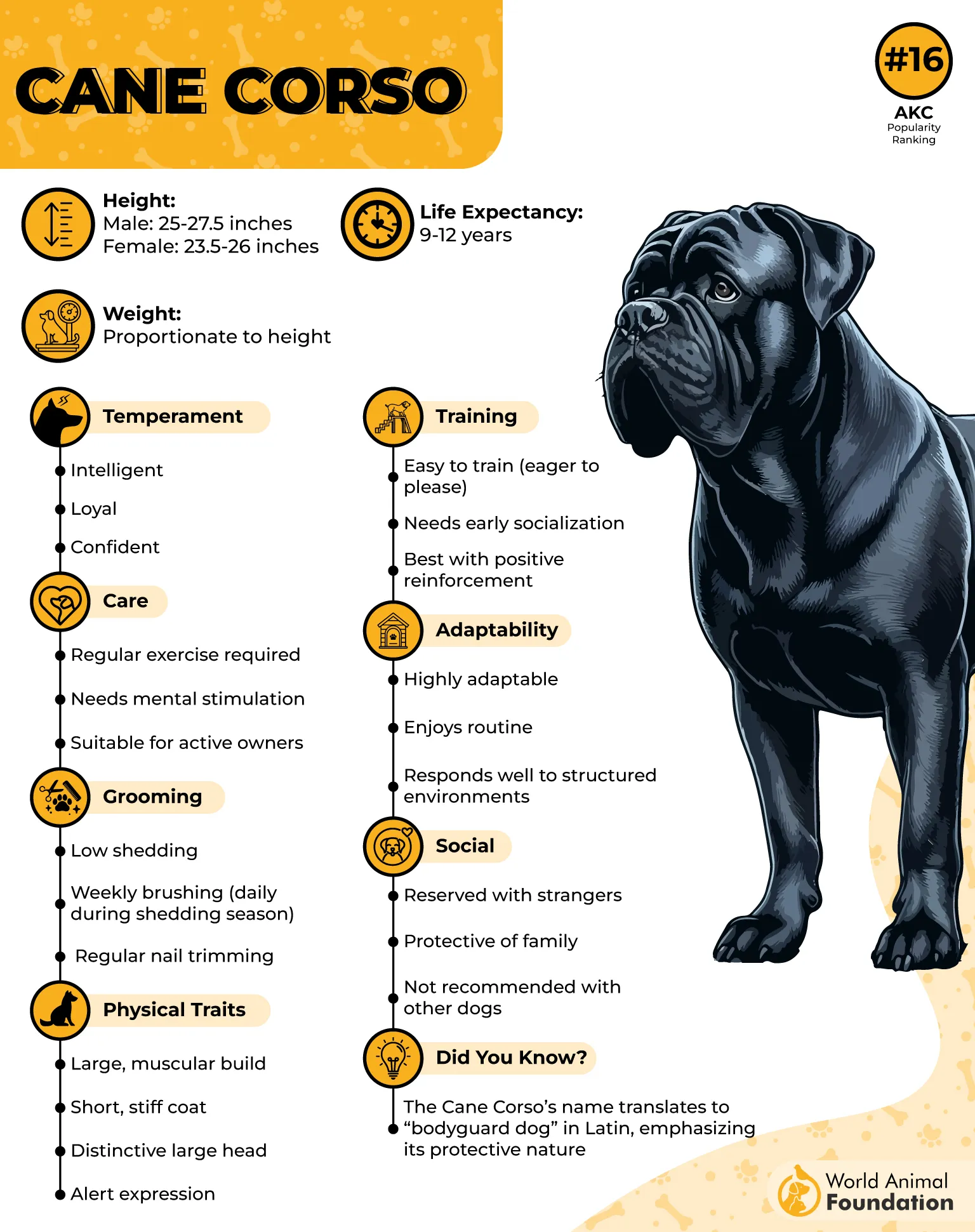
At home, Cane Corsos are affectionate and deeply devoted to their families. While reserved or cautious around strangers, early socialization helps shape them into confident, stable adults. Their protective instincts start young and mature fully by 12–18 months, making early training essential.
Highly intelligent and task-driven, these dogs thrive when mentally and physically engaged. Whether it’s scent work, obedience, or simply helping around the house, Cane Corsos love having a purpose and excel in homes that offer structure and guidance.
Here is why Cane Corsos make excellent guard dogs:
Natural Guarding Instincts: Bred for protection, Cane Corsos are naturally alert, territorial, and quick to respond to threats without hesitation.
Loyal and Protective: Fiercely loyal to their families, they are deeply bonded and instinctively prioritize their owner’s safety, remaining cautious around strangers.
Intimidating Size and Strength: With a muscular build and weighing over 100 lbs, their physical presence alone is a strong deterrent to intruders.
Highly Trainable and Smart: Intelligent and responsive to training, they can master advanced security tasks with consistent structure and early socialization.
Powerful Bite Force: With a bite force of 700 PSI, Cane Corsos are not just deterrents—they are capable defenders when real protection is needed.
6. Bullmastiff
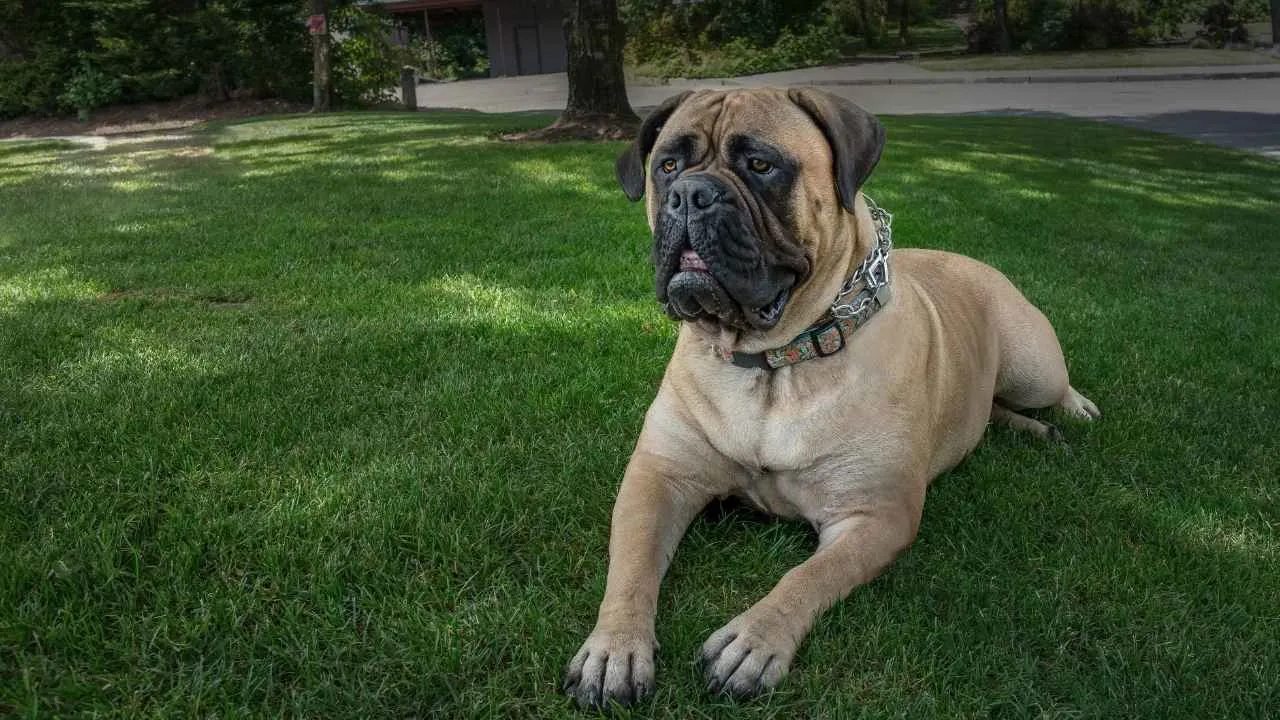
The Bullmastiff is a powerful yet gentle breed developed in late 19th-century England to guard estates from poachers. A cross between the Bulldog and Mastiff, this dog brings together strength, intelligence, and a calm, watchful nature, making it both a reliable protector and a devoted companion.
Originally bred to act silently and decisively when intruders approached, Bullmastiffs continue to make excellent watchdogs. They are alert but not overly vocal, relying on presence and instinct more than noise to safeguard their home.
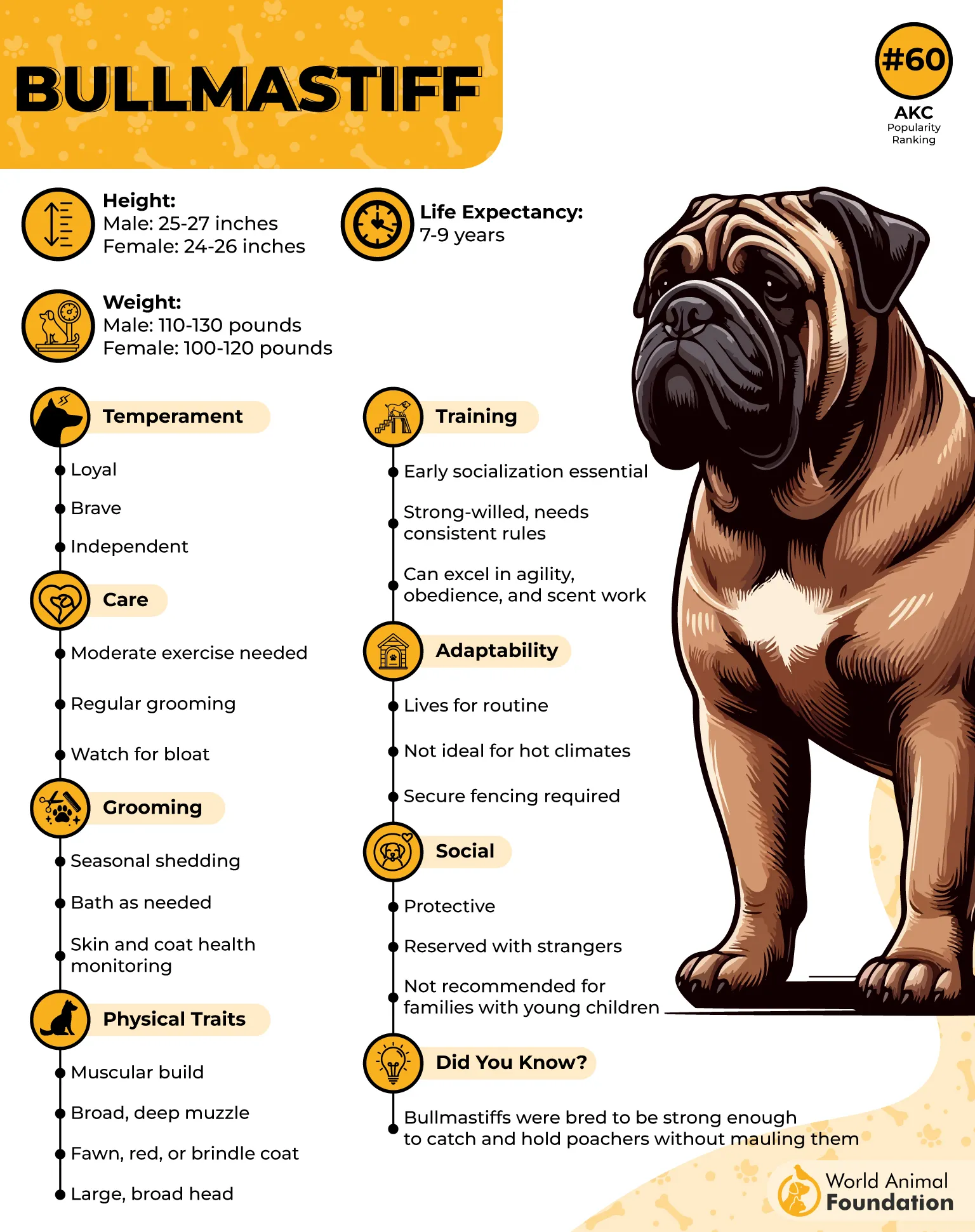
Despite its imposing size, the Bullmastiff is known for its gentle temperament, especially with children. It forms strong bonds with its family and shows loyalty through quiet vigilance rather than aggressive behavior, offering protection without being overly reactive.
Why Bullmastiffs Make Excellent Guard Dogs:
Natural Guardians: Bred specifically to protect estates, they remain instinctively alert and territorial.
Imposing Presence: Their muscular build and confident stance alone can deter intruders.
Low Reactivity: Rarely barks without reason, maintaining a peaceful home environment.
Trainable & Obedient: Respond well to guidance, making them manageable despite their size.
While naturally obedient and eager to please, their strength and guarding instincts require consistent, confident handling to ensure they grow into well-mannered, balanced adults.
7. Rhodesian Ridgeback
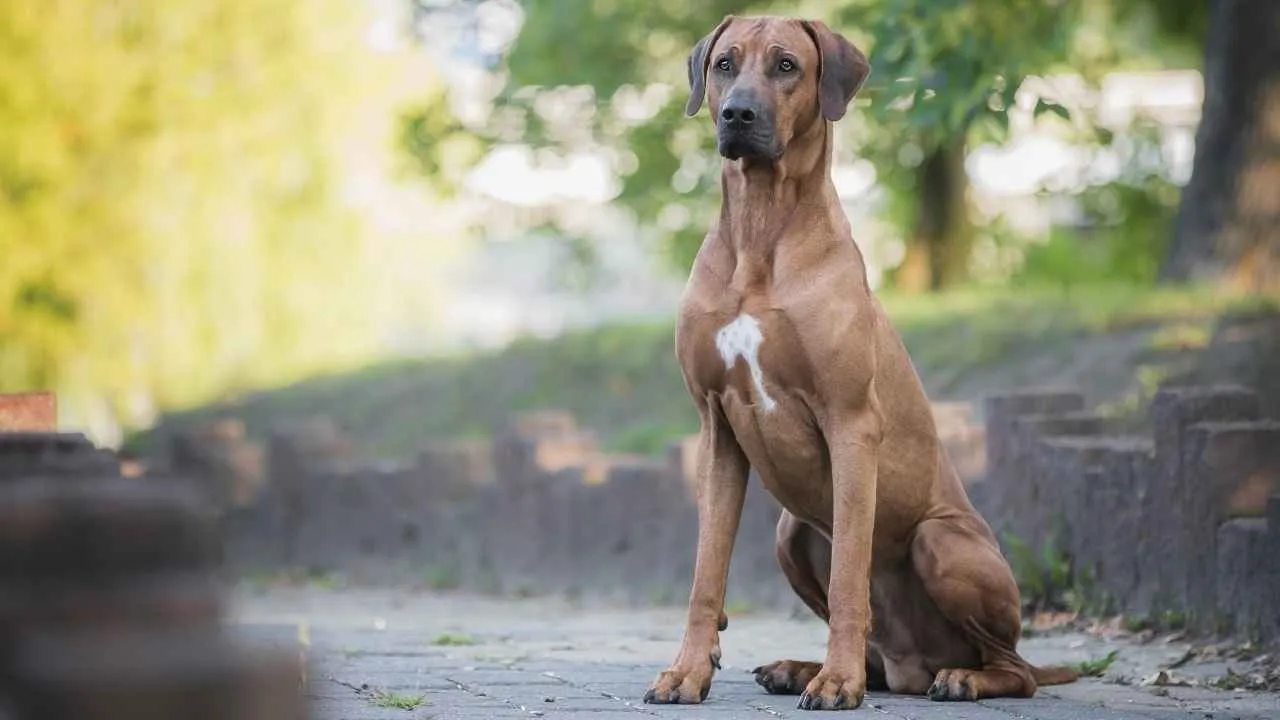
The Rhodesian Ridgeback is a powerful hound breed, instantly recognizable by the ridge of hair growing along its spine in the opposite direction of its coat. Originating in Zimbabwe (formerly Rhodesia), it was developed to work in packs to deter lions and large predators, not to attack, but to stand their ground with calm courage. That protective nature and confidence are still hallmarks of the breed today.
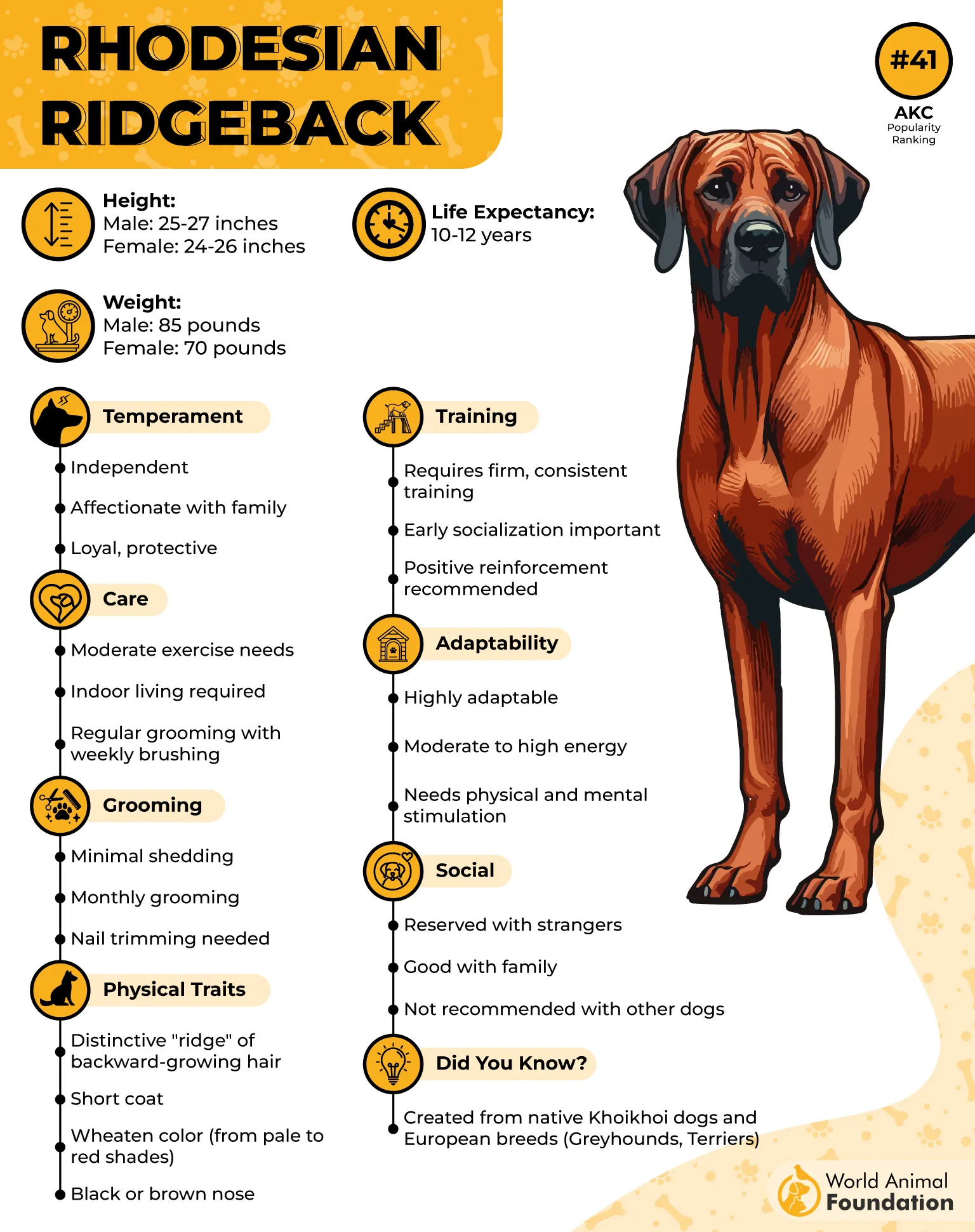
AKC states Ridgebacks are independent thinkers, often testing boundaries but responding well to consistent, positive reinforcement. While training can be a challenge due to their stubborn streak, they excel in activities like obedience, scent work, and lure coursing when properly engaged.
Loyal and emotionally intuitive, Ridgebacks form deep bonds with their families, often attaching closely to one person. Though generally gentle at home, their reserved nature around strangers and calm watchfulness make them excellent natural watchdogs.
As true hounds, they possess keen eyesight and a strong prey drive. Walks can turn into tracking adventures, so secure yards and leashed outings are essential. Early socialization is also key, especially in homes with small pets or young children.
Why Rhodesian Ridgebacks Make Excellent Guard Dogs:
Natural Protectors: Loyal and instinctively protective of their family and home.
Alert & Aware: Sharp senses help them detect unusual activity quickly.
Fearless Yet Calm: Confident and composed under pressure—they don’t overreact but won’t back down.
Physically Imposing: Strong, athletic build capable of deterring intruders.
Independent but Loyal: Reserved with strangers, deeply devoted to their people.
8. Tibetan Mastiff
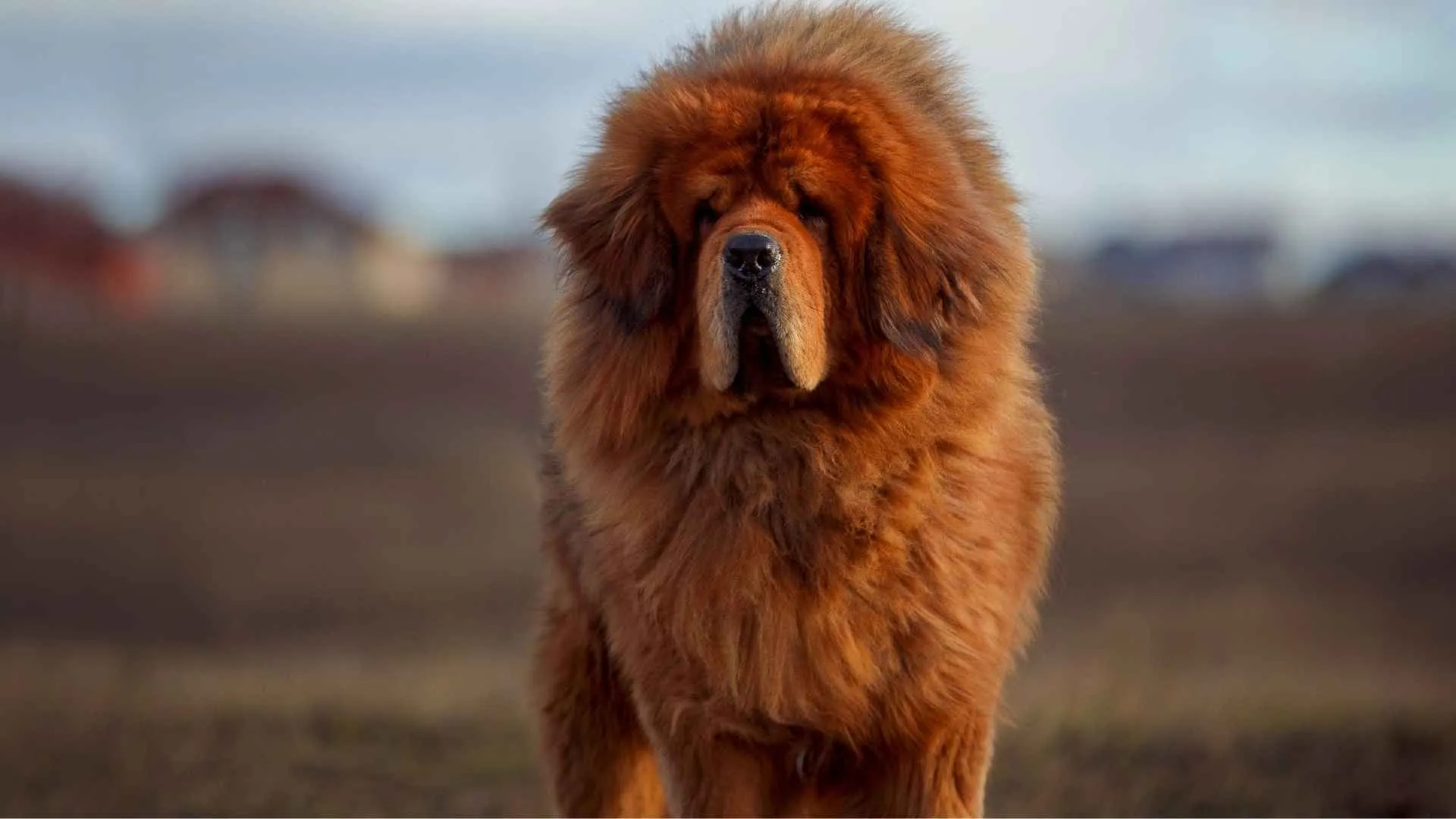
The Tibetan Mastiff is a majestic, ancient guardian breed known for its lion-like mane and dignified presence. Originally bred in the Himalayas to protect livestock and homes, it remains deeply instinctive, loyal, and territorial—ideal for guarding but best suited to experienced dog owners.
Physically, they are large and powerful. Males typically stand 26 inches or more and weigh between 90–150 pounds, while females average 24 inches and 70–120 pounds.
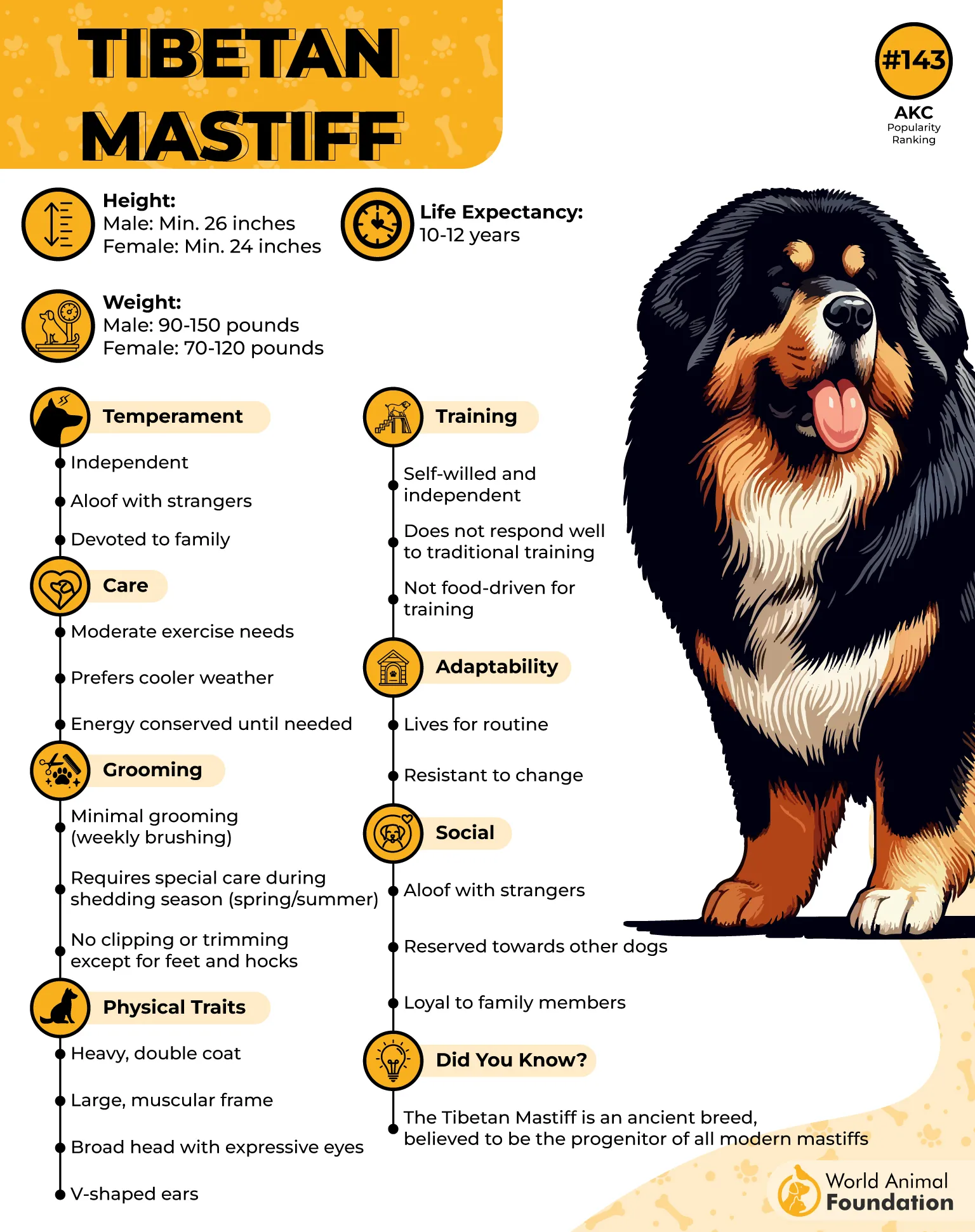
Personality-wise, Tibetan Mastiffs are loyal yet aloof, especially with strangers. They form strong bonds with their families but are not overly affectionate. Due to their territorial nature and tendency to bark loudly—especially at night—they thrive in spacious, rural settings over urban environments.
Training can be a challenge. This breed is strong-willed and independent, often questioning commands unless there’s a clear purpose. They require early socialization, firm yet respectful training, and consistent boundaries.
Why Tibetan Mastiffs Stand Out for Security Roles:
Powerful Guardians: Bred to protect homes and herds; naturally alert and territorial.
Independent Thinkers: Intelligent but stubborn—best with experienced handlers.
Protective Yet Reserved: Loyal to family, wary of strangers, and not overly demonstrative.
Better in Quiet Homes: Thrive in large, calm environments away from city noise and activity.
Did you know?
In Tibet, they’re called Do-Kyi, meaning “tied dog”—referring to how they once guarded monastery gates and homes while tethered nearby.
9. Giant Schnauzer
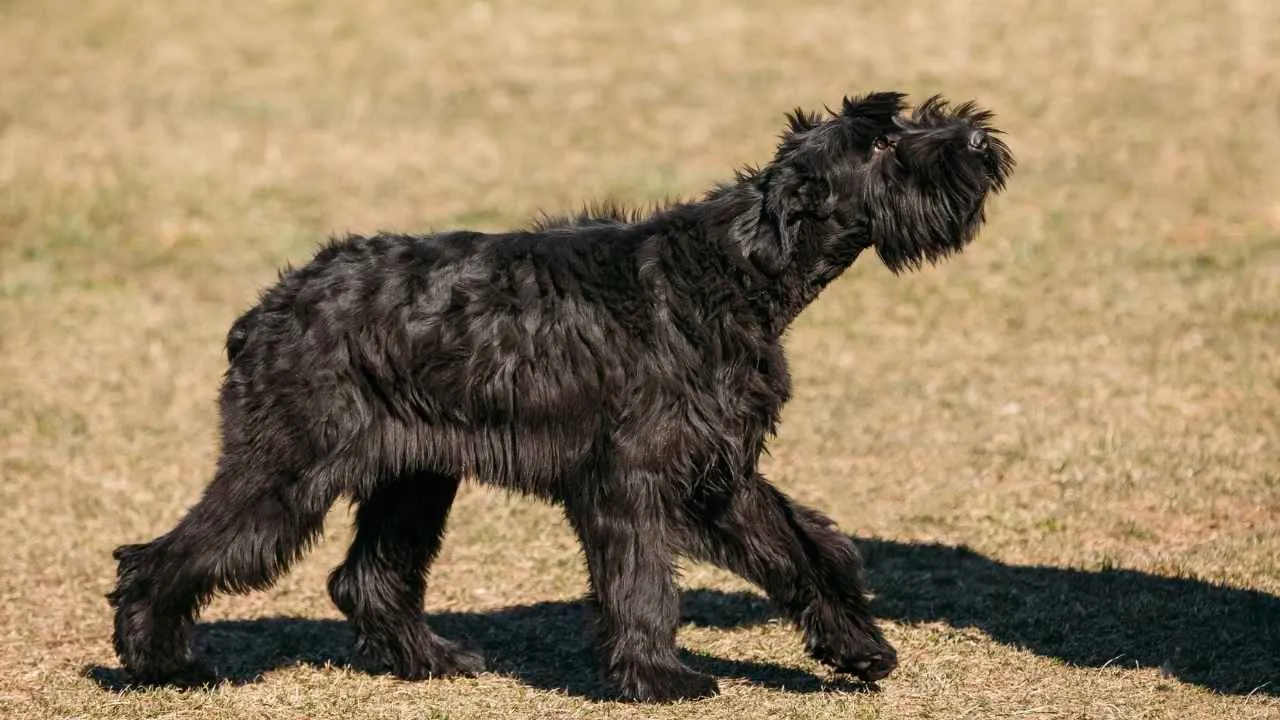
The Giant Schnauzer has a proud history as a multipurpose working dog, initially bred for herding and guarding in Germany. Over time, they’ve excelled as military and police dogs, known for their calm, measured responses in high-stress situations.
Rather than overreacting, they quietly observe and assess for normal and threatening situations. It acts only when necessary, making them excellent choices for personal and home protection.
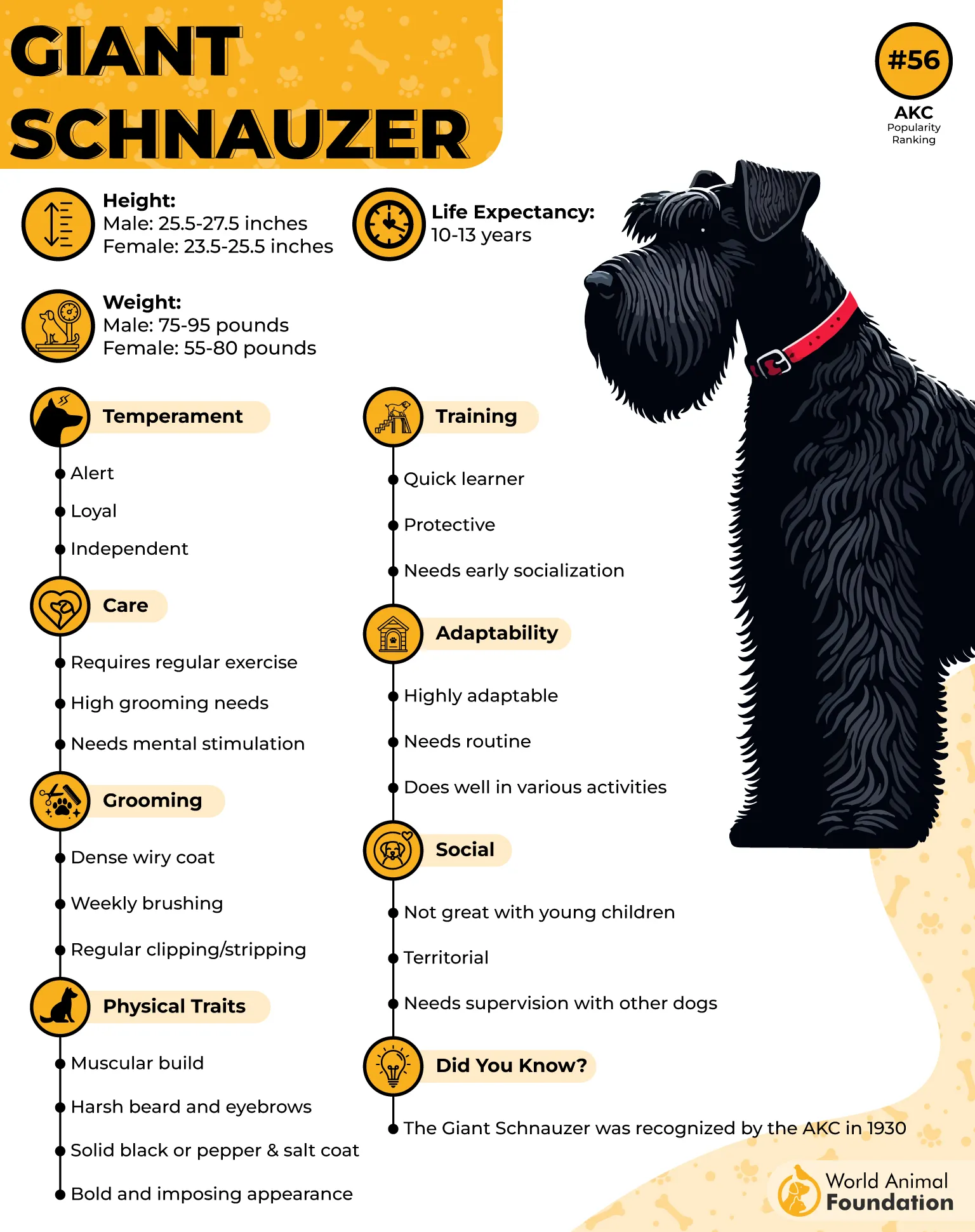
These dogs are not just guardians—they’re also loyal, intelligent companions. Giant Schnauzers are quick learners, responsive to commands, and thrive on structured training. With early socialization, they adapt well to families, including those with small children and other pets.
Physically imposing yet elegant, males typically stand 26–28 inches tall and weigh up to 110 pounds, while females are slightly smaller. Their distinctive solid black or salt-and-pepper coat is double-layered and weather-resistant, requiring routine grooming to maintain its appearance.
Fun fact: Their iconic eyebrows not only give them a keen expression but also serve a practical purpose—shielding their eyes during outdoor work.
Why Giant Schnauzers Stand Out:
Naturally Protective: Calm, observant, and only act when truly necessary.
Highly Trainable: Intelligent and eager to learn commands and routines.
Family-Friendly: Loyal, affectionate, and adaptable with kids and other pets.
Hypoallergenic Coat: Low-shedding and practical for allergy-prone homes.
Conclusion
Choosing the right protective dog breed depends on your lifestyle, environment, and experience as a dog owner. While breeds like the Staffordshire Bull Terrier, Australian Shepherd, and Chow Chows offer both loyalty and protection, they also require proper socialization, specialized training, and regular exercise to thrive as both affectionate family members and guardians.
Whether you’re looking for a large dog with a loud bark, an energetic breed that gets along with other animals, or one of the best dog breeds for home defense, each has its strengths and physical challenges.
Remember, all these protection dogs can become trusted family pets when given the structure and care they need. Ultimately, finding the right dog means balancing security with companionship—something many large breeds and other dogs can offer with the right foundation.


